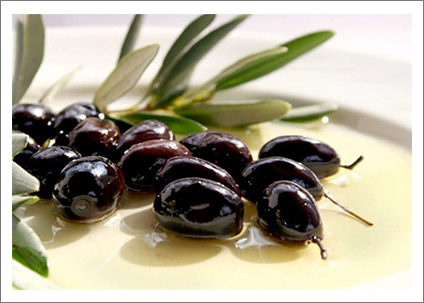Olives by Plantations International
The Olive tree is a type of small tree that belongs to the Oleaceae family. There are 6 subspecies of olive trees and hundreds of cultivars, produced via selective breeding. Olive tree originates from the coast of Mediterranean Sea and western Asia. Due to popularity of the fruit, olives can be found in the temperate and warm areas throughout the world. Olives prefer hot weather and long periods of sun during the day. Even though they can survive on different soils, limestone offers the best conditions for fruit production.
Interesting Olive Facts:
- Olive tree is evergreen plant. It can reach 26 to 49 inches in height. Crown is well branched and rounded in shape. Largest type of olive tree is called “donkey olive”, and the smallest type “bullet”.
- Olive tree has oval-shaped, elongated leaves. They are leathery, grayish green on the upper side and whitish on the lower side.
- Olive tree has small, white flowers arranged in clusters. Flowers have feathery texture and nice odor.
- Olive tree produces small, egg-shaped fruit that usually reaches 0.6 to 0.8 inches in length. Fruit contains large seed that is known as pit, rock or stone.
- Olive tree starts to bloom after 4 years. First harvest can be expected after 15 years.
- Color of the fruit depends on the maturity of the fruit. Unripe fruit is green. Ripe fruit is dark purple to black in color.
- Olives cannot be consumed directly from the tree. Harvested olives need to be processed with brine before they become tasteful.
- Olives are rich source of oils, minerals and vitamins A, E, K and B.
- Olive can be used in the form of oil or as table olives.
- Out of all harvested olives, 90% will be turned into oil, and only 10% will be used as table olives.
- People around the world consume 2.25 million liters of olive oil each year. This oil is much healthier and has more delicate flavor compared to the regular vegetable oils.
- It takes 7 liters of olives for the production of one liter of oil.
- Olive branch is a symbol of peace. People were using olive branch during the history to declare truce by giving it to their enemies. Olive branches were also used for crowning of the champions on the Olympic Games in the past. This tradition was revived during the Olympic Games in Athens in 2004.
- United Nations and four states in the United States have olive branch on their flags.
- Olive trees can live from 300 to 600 years. Several trees managed to survive couple of thousand years. Some of them still produce fruit.
Olive oil, the new liquid gold
Extra-virgin olive oil is showing extra high price increases which may cause pause this summer when consumers drizzle olive oil over salads and barbecues. When other major vegetable oils are trading at very low levels worldwide, olive oil trading prices have increased more than 45 percent.
Olive oil is a niche vegetable oil which has experienced a strong demand growth due to its positive effect on human health.
Olive Oil in Numbers
- In May 2014, global olive oil prices were trading at approximately EUR 2000 per tonne.
- International olive oil price increase in USD terms is 45 percent, currently trading at USD 3900 per tonne.
- International olive oil price increase in euro terms 75 percent, currently trading at EUR 3500 per tonne.
History
When Rip Van Winkle went to sleep back in the 1970s, olive oil was something you cooked with occasionally. When Rip woke up in 2000, olive oil was the talk of the town: at the kitchen table, in foody magazines, in health news. And people were passionate about it.
Maybe it was the result of more folks traveling to Southern Europe and having their hearts stolen by the silvery trees with the golden juice. Whatever the reason, olive oil and olives are definitely hot. Written records of olive cultivation date back to 3000 B.C. in Syria; from there olives spread through Egypt and Crete to the ancient Greek and Roman world. References by Homer in 900 B.C. show olives and olive oil to be important parts of the culture.
Olive trees are shallow-rooted, long-lived and evergreen. Trees are sometimes hundreds of years old and have been said to live 1,000 years.
Planting layout
Olive tree planting scheme is decided according to the cultivation system applied (intensive/non-intensive).
For intensive cultivation, in areas with fertile soil and sufficient rainfall or irrigation, trees are planted densely. A planting density of 200-300 trees/ha is not unusual, depending on variety. Often Plantations International trees are planted very densely (400-500 trees/ha),
In general, two are the main planting layouts:
- The traditional, where planting distances are 7 x 7 m., 6 x 8 m, 8 x 8 m, 10 x 10 m, depending on the area (less than 2000 trees/ha).
Plantations International uses the dynamic precision method, where trees are planted densely at 5 x 6 m, 6 x 6 m, (about 2700-3000 trees/ha).


